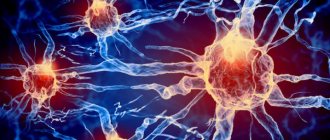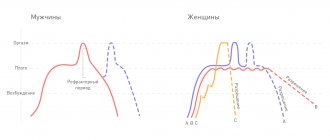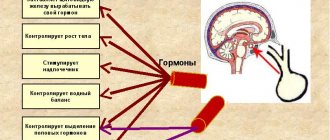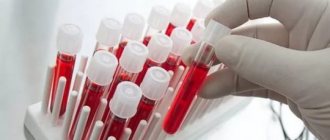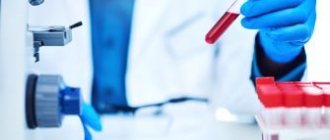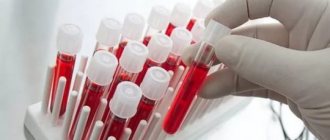Corticotropin-releasing hormone is the main element that determines the body's response to stress. It is also present in diseases that cause inflammation. Too much or too little corticotropin releasing hormone can have a number of negative effects.
Alternative names for corticotropin releasing hormone:
- corticotropin releasing hormone;
- corticotropin releasing factor;
- corticotropin releasing factor;
- corticoliberin;
- CRH;
- CRF.
What is corticotropin releasing hormone?
Corticotropin-releasing hormone, secreted by the paraventricular nucleus in the hypothalamus, releases hormones among other functions. Corticotropin releasing hormone has several important actions.
Its primary role in the body is as a central driver of the stress hormonal system known as the hypothalamic-pituitary-adrenal axis. Corticotropin releasing hormone is so named because it causes the release of adrenocorticotropic hormone from the pituitary gland. Adrenocorticotropic hormone, in turn, travels through the bloodstream to the adrenal glands, where it causes the secretion of the stress hormone cortisol.
Corticotropin-releasing hormone also acts in many other areas of the brain, suppressing appetite, increasing anxiety, and improving memory and selective attention. Together, these effects coordinate behavior, developing and tuning the body's response to stressful situations.
Corticotropin releasing hormone is also produced in increasing amounts by the fetus and placenta during pregnancy, resulting in an increase in cortisol. Ultimately, high levels of corticotropin-releasing hormone, along with other hormones, are thought to induce labor.
Finally, corticotropin releasing hormone is also produced in smaller quantities by some white blood cells, where it stimulates swelling or soreness known as inflammation, especially in the intestines.
GnRH
The hypothalamus regulates human sexual function. Its neurosecrets activate the pituitary gland's production of follicle-stimulating hormone (FSH) and luteinizing hormone (LH).
What hormones does the hypothalamus produce to control reproductive function? These are neurosecrets called gonadoliberins. They stimulate the production of gonadotropic hormones.
Gonadotropin-releasing hormones are divided into two types:
- Luliberin. Activates the formation of the hormone LH. This neurosecretion is necessary for the maturation and release of the egg. If luliberin is produced in insufficient quantities, then ovulation does not occur.
- Follyliberin. Promotes the release of the FSH hormone. Necessary for the growth and development of follicles in the ovaries.
GnRH deficiency in women causes menstrual cycle disorders, lack of ovulation and hormonal infertility. In men, a lack of luliberin and follyliberin leads to a decrease in potency and libido, as well as a decrease in sperm activity.
How is corticotropin releasing hormone controlled?
How is corticotropin releasing hormone controlled?
The secretion of corticotropin-releasing hormone is stimulated by the nervous activity of the brain. It follows a natural 24-hour rhythm in non-stressful conditions, peaking around 8 a.m. and lowest at night.
However, corticotropin-releasing hormone levels can also be higher than normal daily levels due to stressful experiences, infections, or even exercise. An increase in the level of corticotropin-releasing hormone leads to an increase in the level of the stress hormone cortisol, which mobilizes the energy resources necessary to eliminate the cause of stress. High levels of stress hormones over a long period can have negative effects on the body. Because of this, cortisol blocks the continuous release of corticotropin releasing hormone and turns off the hypothalamic-pituitary-adrenal axis, which is known as negative feedback. a loop
Some of the effects of corticotropin releasing hormone in the brain can also be blocked by leptin, a hormone produced by fat tissue. This is partly why corticotropin-releasing hormone can control appetite.
Prolactoliberin
Prolactoliberin is a neurohormone that stimulates the production of prolactin by pituitary cells. It is necessary for the formation of milk during lactation. A sufficient amount of this hormone is very important for nursing mothers.
However, prolactoliberin and prolactin are formed in non-lactating women, and even in men. What are these hormones used for outside of lactation? There is an assumption that prolactoliberin is involved in immune reactions and stimulates the growth of new blood vessels. Some studies show that this neurosecretion has analgesic properties.
However, excess prolactoliberin is harmful. It can cause galactorrhea. This is an endocrine disorder that results in the release of milk from the mammary glands in non-breastfeeding women. In men, this disease leads to abnormal enlargement of the mammary glands - gynecomastia.
What happens if I have too much corticotropin releasing hormone?
Abnormally high levels of corticotropin-releasing hormone are associated with a variety of diseases. Because it stimulates anxiety and suppresses appetite, too much corticotropin releasing hormone is thought to cause nerve problems such as:
- clinical depression;
- anxiety;
- sleep disorders;
- anorexia nervosa.
Additionally, high levels of corticotropin-releasing hormone can also worsen some inflammatory problems:
- rheumatoid arthritis;
- psoriasis;
- ulcerative colitis;
- Crohn's disease.
This may seem surprising at first because increased levels of corticotropin releasing hormone in the brain can lead to increased production of glucocorticoids, and glucocorticoids have anti-inflammatory effects.
However, research has shown that when high levels of the corticotropin-releasing hormone occur in tissues outside the brain, they can actually have powerful inflammatory effects. Therefore, elevated levels of corticotropin releasing hormone in the joints, skin or intestines may worsen these inflammatory conditions or even play a role in their development.
Hormonal implant
There is such a method of contraception as subcutaneous implants containing a derivative of the hormone progesterone - levonorgestrel.
The effect of a contraceptive containing the above hormone is designed to thicken cervical mucus and make it difficult for sperm to penetrate the fallopian tubes and uterus. The drug is produced in the form of small capsules, which are implanted under the skin in the forearm by a gynecologist.
This method of contraception is classified as very reliable, since its effectiveness is almost one hundred percent, but when using implants, one should take into account the fact that the method may be accompanied by changes in the menstrual cycle, decreased libido, headaches, and in some cases, weight gain . It is recommended to use this method of protection for women under forty who do not plan to have children in the near future. The advantages of implants include the fact that while they are safe, this implant is easy to use and aesthetically pleasing; a woman does not have to constantly think about methods of protection. The implant significantly reduces the risk of developing uterine cancer, has a therapeutic effect in some gynecological diseases, reduces the pain of menstruation, does not have a negative effect on the liver and causes only minor metabolic changes in carbohydrate-lipid metabolism. One cannot help but mention such a positive quality of the implant as the fact that fertility, after finishing taking the drug, is restored quite quickly. If we talk about the disadvantages of this method of contraception, then it should be mentioned that a small scar remains under the skin at the site where the capsules were introduced, but it is hardly noticeable. In some cases, bloody vaginal discharge may occur, and amenorrhea may develop. In addition, one cannot help but mention the high cost of this method of contraception, which means that not everyone can afford it, and installing an implant requires the participation of a specialist. This method of contraception is recommended for use by women aged thirty-five to forty years, as well as those with uterine fibroids, women who are contraindicated in taking other hormonal drugs and those women for whom the implant acts as a medicine for fibrocystic mastopathy, dysmenorrhea, endometriosis.
What happens if I have too little corticotropin releasing hormone?
Research has shown that people with Alzheimer's disease have particularly low levels of corticotropin-releasing hormone. Scientists also suspect that a lack of corticotropin-releasing hormone may cause chronic fatigue syndrome, sometimes called myalgic encephalomyelitis. With it, patients experience problems with sleep, memory and concentration. However, further research is needed on both of these issues before this can be confirmed.
During pregnancy, low production of corticotropin-releasing hormone by the fetus or placenta can lead to miscarriage.
ONLINE REGISTRATION at the DIANA clinic
You can sign up by calling the toll-free phone number 8-800-707-15-60 or filling out the contact form. In this case, we will contact you ourselves.
Somatoliberin
Somatoliberin stimulates the production of growth hormone by the pituitary gland. The hypothalamus produces increased amounts of this neurosecretion as a person grows. Increased formation of somatoliberin is observed in children and adolescents. With age, hormone production decreases.
Active production of somatoliberin occurs during sleep. Related to this is the widespread belief that a child grows while he sleeps. Hormone synthesis also increases during stress and exercise.
Somatoliberin is necessary for the human body not only for the growth of bones and tissues in childhood. This neurohormone is also produced in small quantities in adults. It affects sleep, appetite and cognitive function.
A deficiency of this neurohormone in childhood can lead to severe growth retardation, including the development of dwarfism. If the production of somatoliberin is reduced in an adult, then this has little effect on his well-being. There may be only slight weakness, deterioration in working capacity and poor muscle development.
Excess somatoliberin in children can lead to excessively high growth (gigantism). If this hormone is produced in increased quantities in adults, then acromegaly develops. This is a disease that is accompanied by disproportionate growth of bones and tissues of the face, feet and hands.
Nowadays, pharmacological preparations based on somatoliberin have been developed. They are mainly used for growth deficiency in children. But often people involved in bodybuilding take such drugs to build muscle mass. If the drug is used for sports purposes, you should consult an endocrinologist before using it.
Melanoliberin
Melanoliberin releases melanotropin in the pituitary gland. This is a substance that promotes the formation of melanin in epidermal cells.
Melanin is a pigment that is formed in special cells - melanocytes. Its excess causes darkening of the epidermis. Melanoliberin is responsible for skin color. An increased amount of neurosecretion is formed when exposed to sunlight, which becomes the cause of tanning.
Statins
Statins are hypothalamic hormones that inhibit the production of pituitary secretions. We can say that their function is opposite to the action of liberins. Statins include the following neurosecrets of the hypothalamus:
- Somatostatin. Suppresses the synthesis of growth hormone.
- Prolactostatin. Blocks the formation of prolactin.
- Melanostatin. Inhibits the production of melanotropic hormone.
Currently, the hormonal function of the hypothalamus is still being studied. Therefore, it is not yet known whether there are neurosecrets that inhibit the production of gonadotropic and thyroid-stimulating hormones, as well as ACTH. Medical science suggests that not all hypothalamic neurohormones from the statin group have yet been discovered.
STG[edit | edit code]
The gene encoding GH is located on the long arm of chromosome 17. There are also four genes homologous to it: three genes encoding different forms of placental lactogen, and a gene encoding placental growth hormone, which is secreted by syncytiotrophoblast cells. GH is secreted as a mixture of peptides with different molecular weights and charges. The main form of GH has a molecular weight of about 22,000 and is a single non-glycosylated polypeptide chain of 191 amino acid residues with two disulfide bonds. By alternative splicing, a form with a molecular weight of about 20,000 is formed, which lacks the region from the 32nd to 46th amino acid residue; it has approximately the same activity and accounts for 5-10% of circulating GH. Other forms of GH are present in serum, but their significance is unclear. About 45% of GH with a molecular weight of 22,000 and 25% of GH with a molecular weight of 20,000 form a complex with the serum GH-binding protein, which contains the extracellular domain of the GH receptor. The GH-binding protein serves as a GH reservoir, since in combination with this protein, GH breaks down 10 times slower than free GH. On the other hand, GH-binding protein reduces the activity of GH because it prevents its interaction with receptors in tissues.
